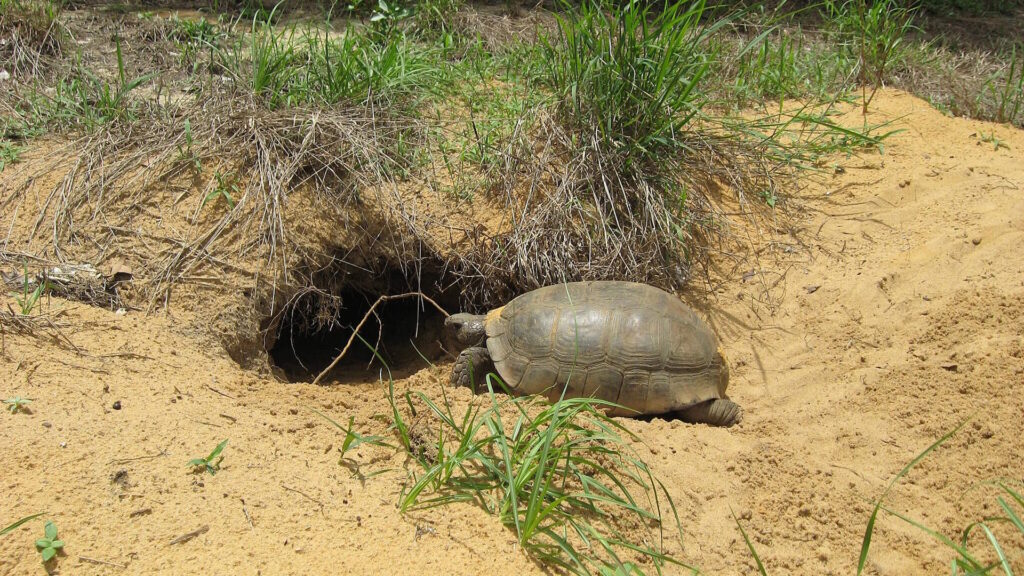When we think of tortoises, the first image that comes to mind is often their iconic shell – a natural fortress that shields these remarkable reptiles from predators. However, these evolutionary marvels serve purposes far beyond mere protection. The tortoise shell, a complex structure that has evolved over millions of years, functions as a multifaceted tool that assists these creatures in various aspects of their lives. From regulating body temperature to storing vital nutrients, tortoise shells are sophisticated biological structures that contribute significantly to these animals’ survival and daily activities. In this article, we’ll explore the fascinating and often overlooked functions of tortoise shells beyond their defensive capabilities.
The Anatomical Marvel of Tortoise Shells

Before diving into the various functions, it’s important to understand the remarkable structure of a tortoise shell. Unlike what many people believe, a tortoise’s shell isn’t an external accessory – it’s actually part of their skeleton, fused with their ribs, spine, and collar bone. The shell consists of two main parts: the carapace (upper shell) and the plastron (lower shell), connected by bridges on either side. This structure is composed of approximately 60 bones covered by scutes, which are modified scales made of keratin – the same protein found in human fingernails. The intricate design of interconnected bones creates a lightweight yet incredibly strong structure that allows tortoises to perform various functions beyond protection, making it one of nature’s most successful evolutionary adaptations.
Nature’s Perfect Thermoregulation System

Tortoises are ectothermic creatures, meaning they rely on external sources to regulate their body temperature. Their shells play a crucial role in this thermoregulation process, functioning essentially as natural solar panels. During cooler periods, tortoises position themselves with their carapace facing the sun, allowing the shell to absorb heat which then transfers to their internal organs. Conversely, when temperatures rise too high, they can retreat to shade and angle their shells away from direct sunlight to cool down. Some species even excavate shallow depressions in cool soil where they can press their plastron against the ground to further reduce body temperature. This sophisticated temperature control system enables tortoises to maintain optimal body functions across varying environmental conditions without expending significant energy.
Water Collection and Hydration Assistance

In arid environments where water is scarce, a tortoise’s shell becomes an invaluable tool for hydration. The domed shape of most tortoise carapaces creates a natural catchment system that channels rainwater toward the head and mouth, allowing tortoises to drink directly from their own shells during rainfall. Desert species have evolved shells with ridges and grooves that maximize this water-collecting efficiency. Some tortoise species can even absorb moisture through the skin between their scutes, particularly during morning dew. Additionally, tortoises may store small amounts of water in pockets beneath their shells, creating a modest reservoir they can access during dry periods, which helps them survive in environments where traditional water sources are unreliable.
Mineral and Nutrient Storage

The tortoise shell serves as an essential biological bank for storing vital minerals and nutrients. Calcium, phosphorus, and other minerals are continuously deposited and withdrawn from the shell structure as needed, making it a living reserve of essential resources. During periods of nutritional scarcity or specific physiological demands, such as egg production in females, tortoises can mobilize these stored minerals from their shells to support bodily functions. This biological storage system is particularly crucial during hibernation or estivation periods when food intake ceases entirely. The shell’s ability to function as a dynamic nutrient reservoir rather than just a static protective structure highlights its sophisticated integration with the tortoise’s overall metabolic system.
Sexual Dimorphism and Reproduction

Tortoise shells exhibit sexual dimorphism that plays a direct role in reproduction and mating behaviors. In many species, males typically have concave plastrons (lower shells) that facilitate mounting females during mating, allowing for more stability and proper positioning. Female tortoises often develop larger, more rounded carapaces that provide additional internal space for egg development. The shell shape can also influence mate selection, with certain structural characteristics signaling genetic fitness to potential partners. Some male tortoises even use their shells as instruments during courtship, bumping against female shells or even producing sounds by retracting into their shells in specific rhythmic patterns, demonstrating how shells have evolved beyond protection to serve reproductive functions.
Buoyancy Control in Aquatic Environments

While many people associate tortoises exclusively with land habitats, numerous species spend significant time in or near water, and their shells assist with aquatic navigation. The internal volume of a tortoise’s shell contains air spaces that help with buoyancy control, enabling some species to float more effectively when crossing bodies of water. Tortoises can adjust their buoyancy by controlling the amount of air they hold in their lungs and the position of their limbs. Some semi-aquatic tortoise species have evolved flatter, more streamlined shells that reduce water resistance when swimming, while still maintaining protective benefits. This dual-purpose adaptation illustrates how tortoise shells have evolved to accommodate both terrestrial and aquatic survival needs in species that navigate multiple environments.
Camouflage and Visual Deception

The coloration and patterning of tortoise shells serve as sophisticated camouflage systems tailored to their specific environments. Desert-dwelling species often have lighter-colored shells that reflect sunlight and blend with sandy surroundings, while forest-dwelling tortoises typically display darker, mottled patterns that mimic the dappled light of their woodland homes. The growth rings and irregular patterns on many shells break up the tortoise’s outline when viewed by predators from above. Some species even accumulate natural debris like soil and plant matter on their shells, enhancing this camouflage effect. This visual deception capability demonstrates how the shell functions not just as a physical barrier but as a complex visual adaptation that helps tortoises avoid detection in the first place.
Chemical Defense Mechanisms

Beyond physical protection, the shells of certain tortoise species incorporate chemical defense strategies. Some tortoises secrete compounds through their shells that make them unpalatable or even toxic to potential predators. These secretions can range from mildly distasteful substances to more potent irritants that deter predators after an initial encounter. The Pancake Tortoise, for instance, produces a strong-smelling secretion from glands near the shell bridges when threatened. These chemical defenses work in concert with the physical protection of the shell to create multiple layers of security. The ability to integrate chemical warfare into their protective strategy showcases the evolutionary sophistication of tortoise shells beyond mere mechanical barriers.
Shell as a Communication Tool

Tortoise shells serve as sophisticated communication platforms within their species. Through subtle variations in shell patterns and coloration, tortoises can convey information about their age, health status, and even genetic quality to potential mates and rivals. When tortoises interact, they frequently engage in shell-knocking behaviors, creating distinctive sounds that communicate territorial boundaries or mating availability. Some species use their shells in complex dominance displays, with larger individuals elevating their shells to appear more imposing during confrontations. Researchers have even documented that certain tortoise species can recognize individuals within their social groups partly based on unique shell characteristics, suggesting that shells function as visual identifiers in tortoise social structures.
Ecological Engineering Through Shell Use

Tortoises unintentionally serve as ecological engineers, with their shells playing a central role in reshaping their environments. As they move through their habitats, their shells dislodge soil, disperse seeds that adhere to them, and create small depressions that can collect water and benefit other species. Abandoned tortoise shells provide crucial microhabitats for countless small organisms ranging from insects to fungi. In desert environments, the burrows that tortoises create with the help of their shells can become climate-controlled refuges that benefit entire communities of smaller creatures. This ecosystem modification demonstrates how tortoise shells contribute to broader environmental health and biodiversity, extending their utility far beyond the individual tortoise’s needs.
Adaptations for Self-Righting

One of the most fascinating functional aspects of tortoise shells is their role in self-righting when the animal becomes overturned. The dome shape of many tortoise carapaces is specifically evolved to assist with this potentially life-saving maneuver. When flipped onto their backs, tortoises can leverage their head and necks against the ground while pushing with their limbs, using the curvature of their shell to rock and eventually flip themselves back over. Different species have evolved varying shell morphologies that balance protection with self-righting capabilities – a critical evolutionary trade-off. Some species have higher domed shells offering greater protection but requiring more effort to self-right, while others have flatter shells that facilitate easier righting but provide less defensive coverage, demonstrating how shell shape represents an evolutionary compromise between multiple survival functions.
Healing and Regeneration Properties

Perhaps one of the most remarkable aspects of tortoise shells is their ability to heal and regenerate when damaged. Unlike human bones that require external intervention to properly mend, tortoise shells contain living tissue with blood vessels and nerve endings that enable autonomous repair processes. When a shell sustains damage, specialized cells migrate to the injury site, depositing new keratin and bone material to gradually repair the breach. This self-healing capability is particularly impressive considering the shell’s vital protective role. Some species can regenerate substantial portions of their shells over time, though the repaired areas often remain visibly different from the original shell pattern. This regenerative capacity demonstrates the dynamic, living nature of tortoise shells and their importance to the animal’s long-term survival.
Shell Growth as a Historical Record

A tortoise’s shell functions as a biological timeline, recording the animal’s life history through its growth patterns. The characteristic rings visible on tortoise scutes, similar to tree rings, document periods of growth and scarcity throughout the animal’s life. During favorable conditions with abundant food and water, growth rings form wider and more pronounced, while during drought or food scarcity, the rings appear narrower and closer together. Scientists can analyze these growth patterns to understand not only an individual tortoise’s history but also historical climate patterns in their habitat. Some tortoises live for over a century, making their shells invaluable natural archives of environmental conditions spanning decades, essentially functioning as living climate records that help researchers understand long-term environmental changes.
Conclusion: The Multifunctional Masterpiece

The tortoise shell exemplifies nature’s ingenuity, transcending its reputation as merely a defensive structure to reveal itself as one of the animal kingdom’s most versatile adaptations. From thermoregulation and water collection to nutrient storage and communication, these remarkable structures support tortoise survival through numerous sophisticated mechanisms. Understanding the multifunctionality of tortoise shells gives us deeper appreciation for these ancient reptiles and their evolutionary success. As we continue to study these remarkable creatures, we discover that their iconic shells tell stories not just of protection, but of adaptation, survival, and the countless ways nature optimizes its designs to serve multiple purposes simultaneously. The tortoise carries not just a shield, but a multifunctional tool that has helped ensure their survival for more than 200 million years – making it one of evolution’s greatest success stories.




